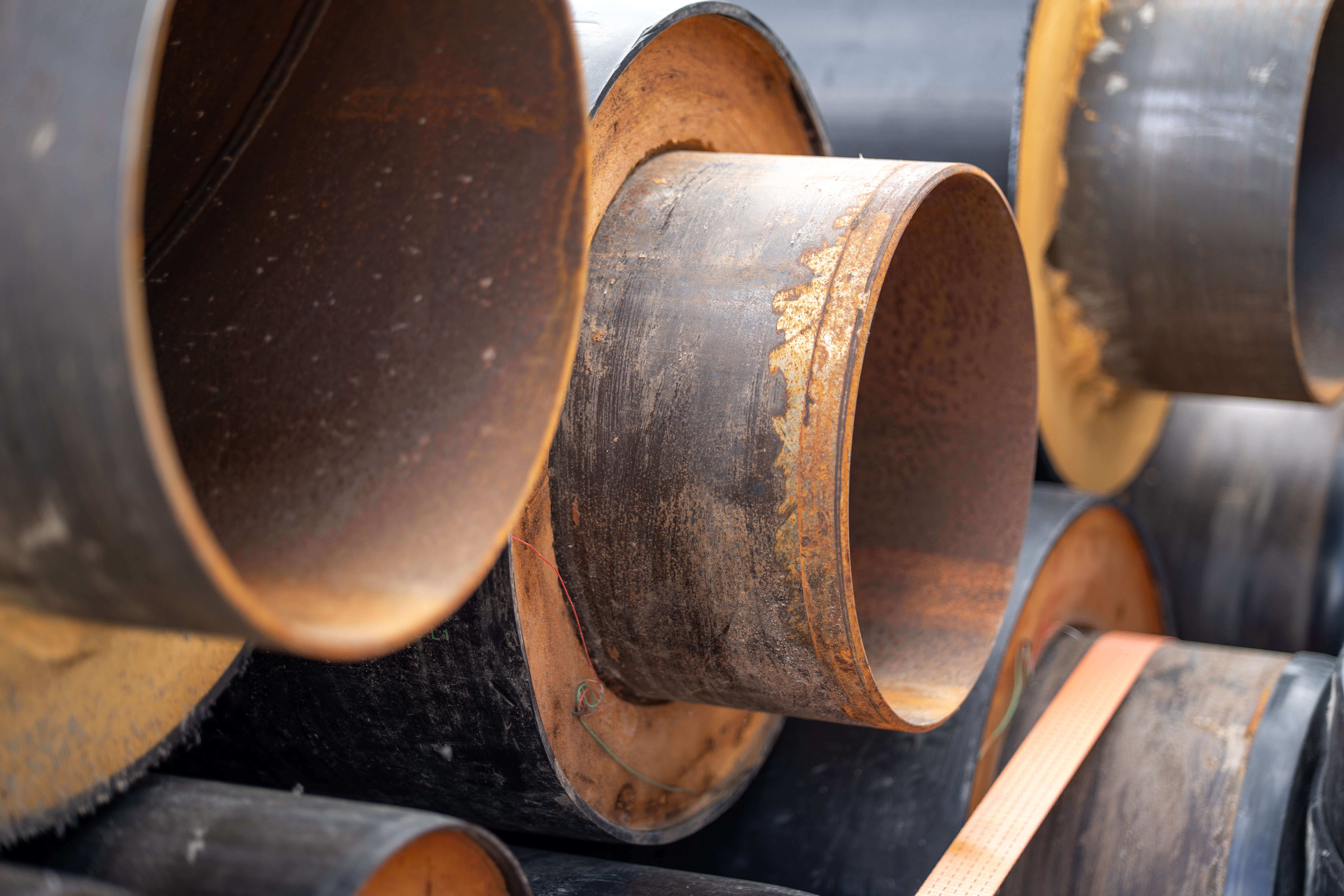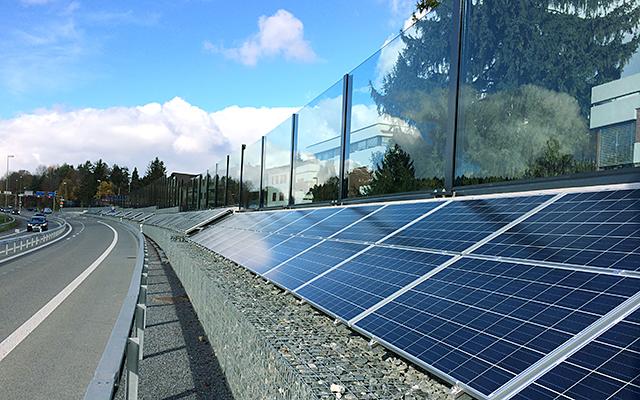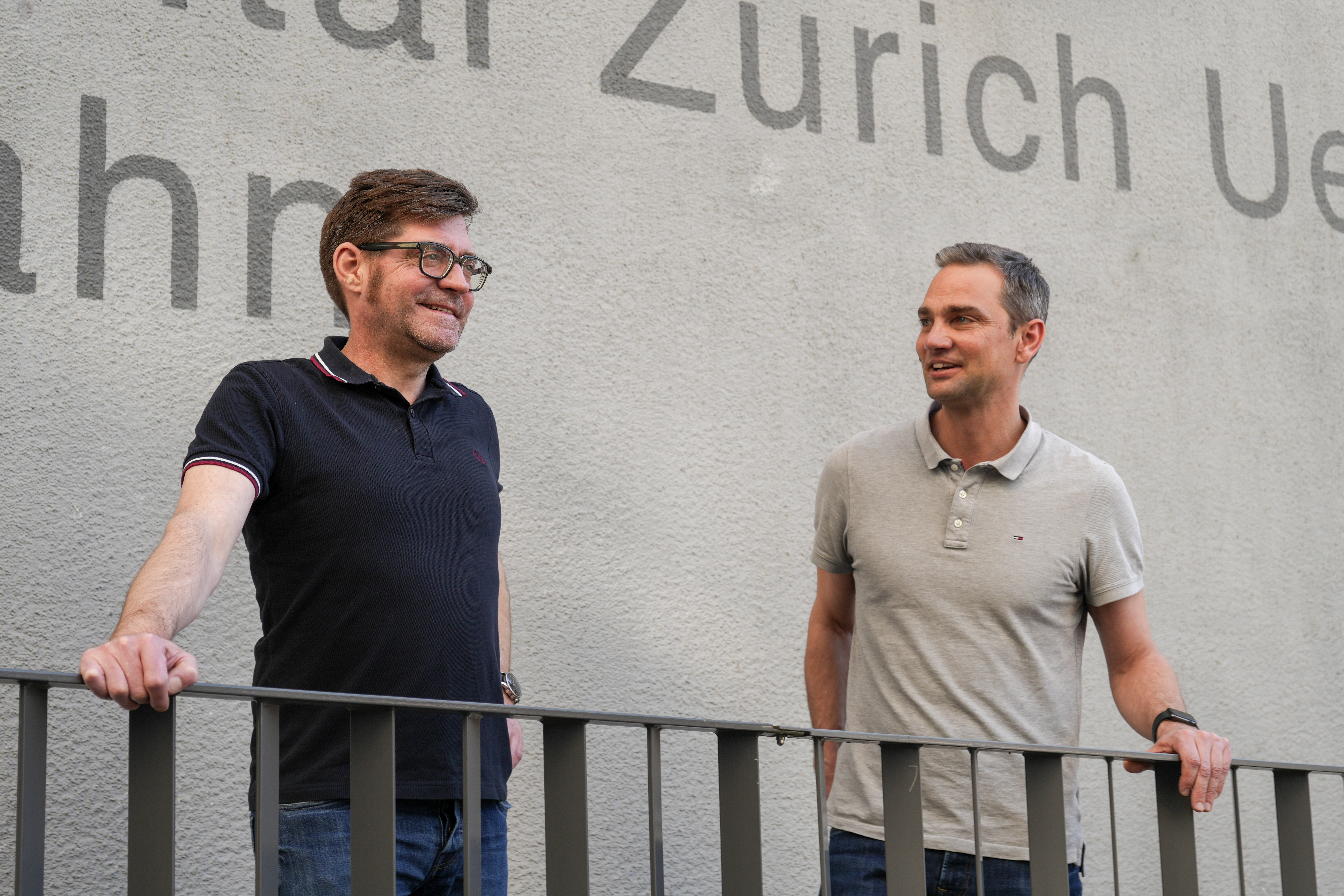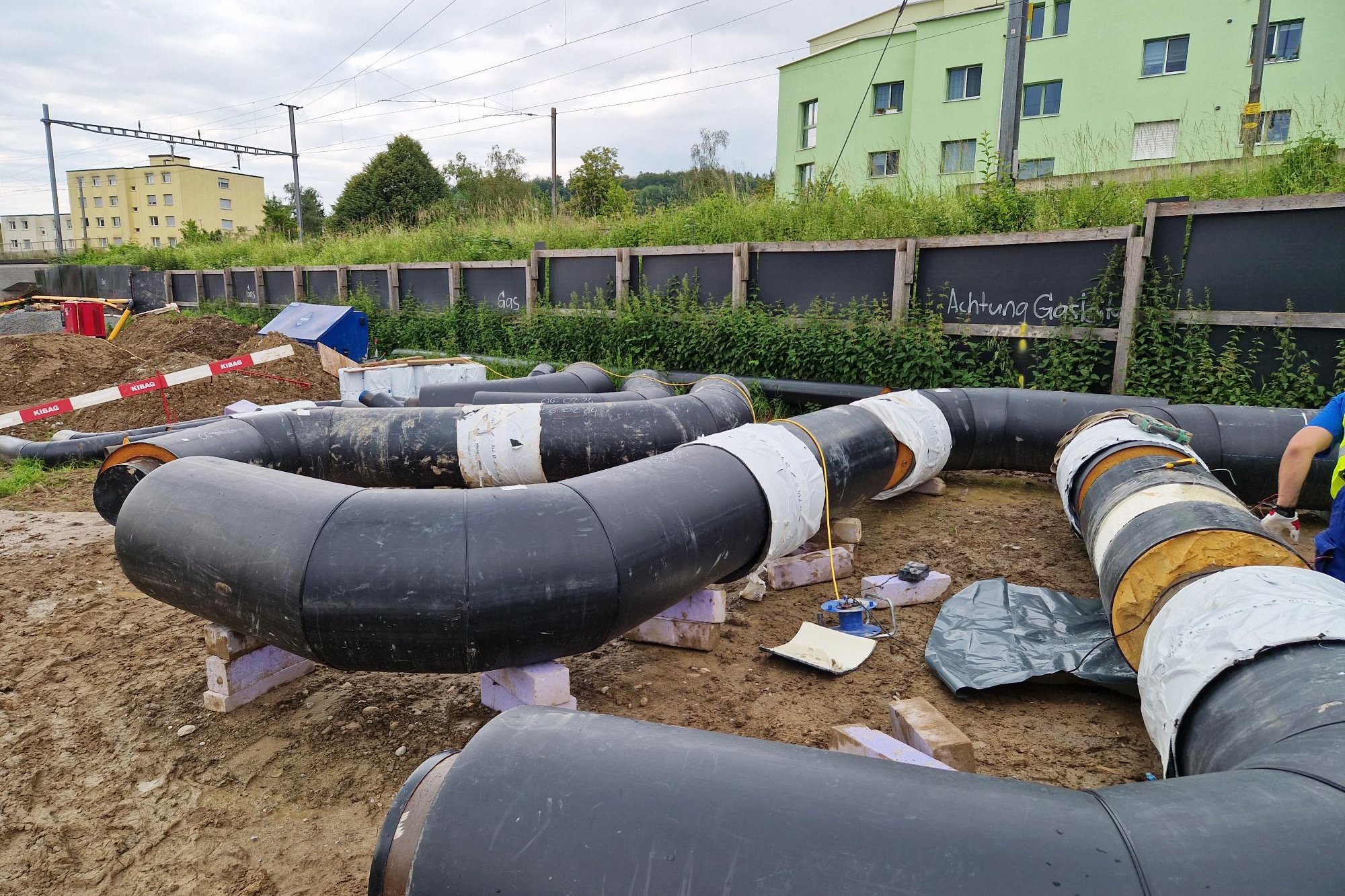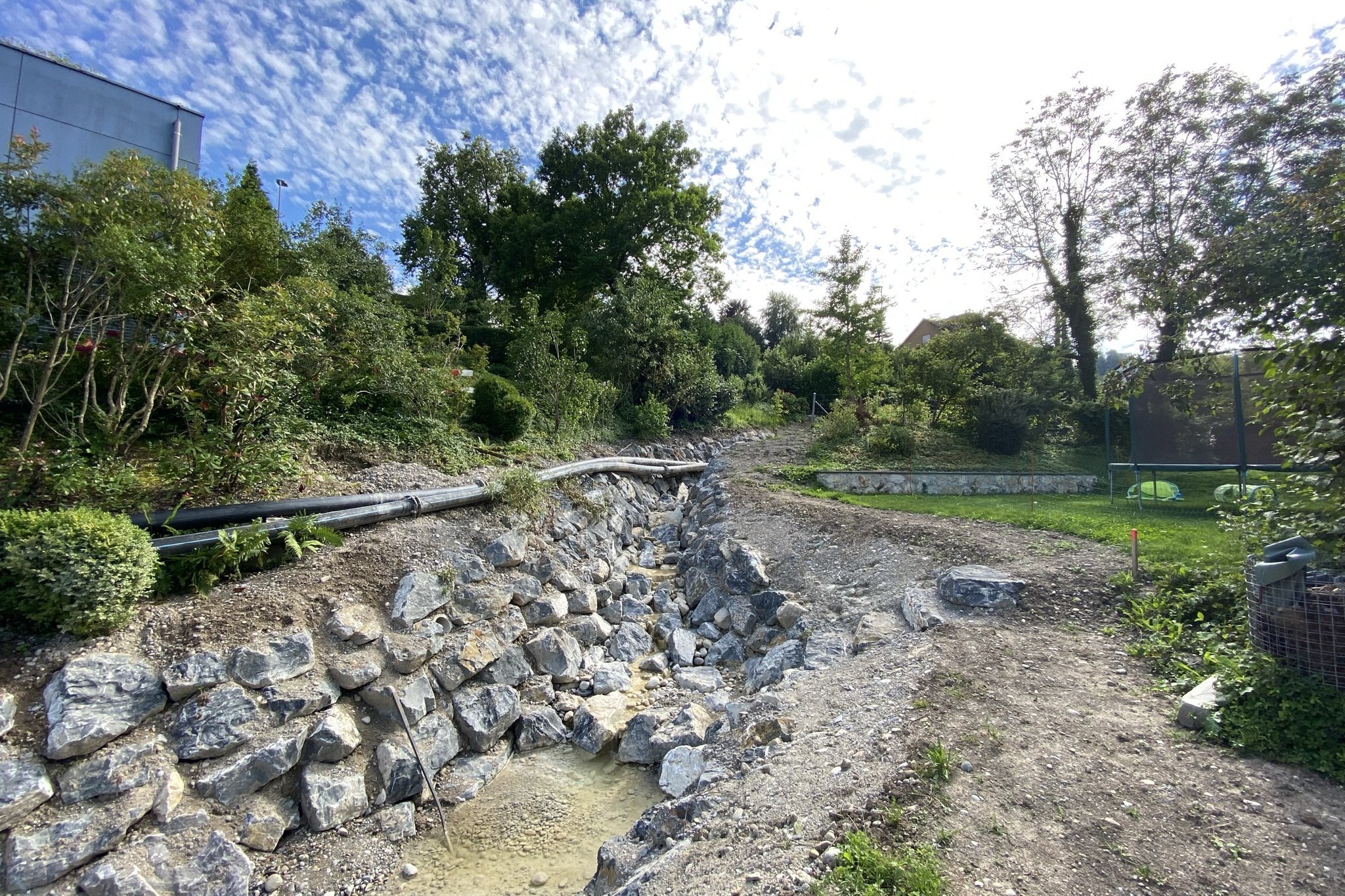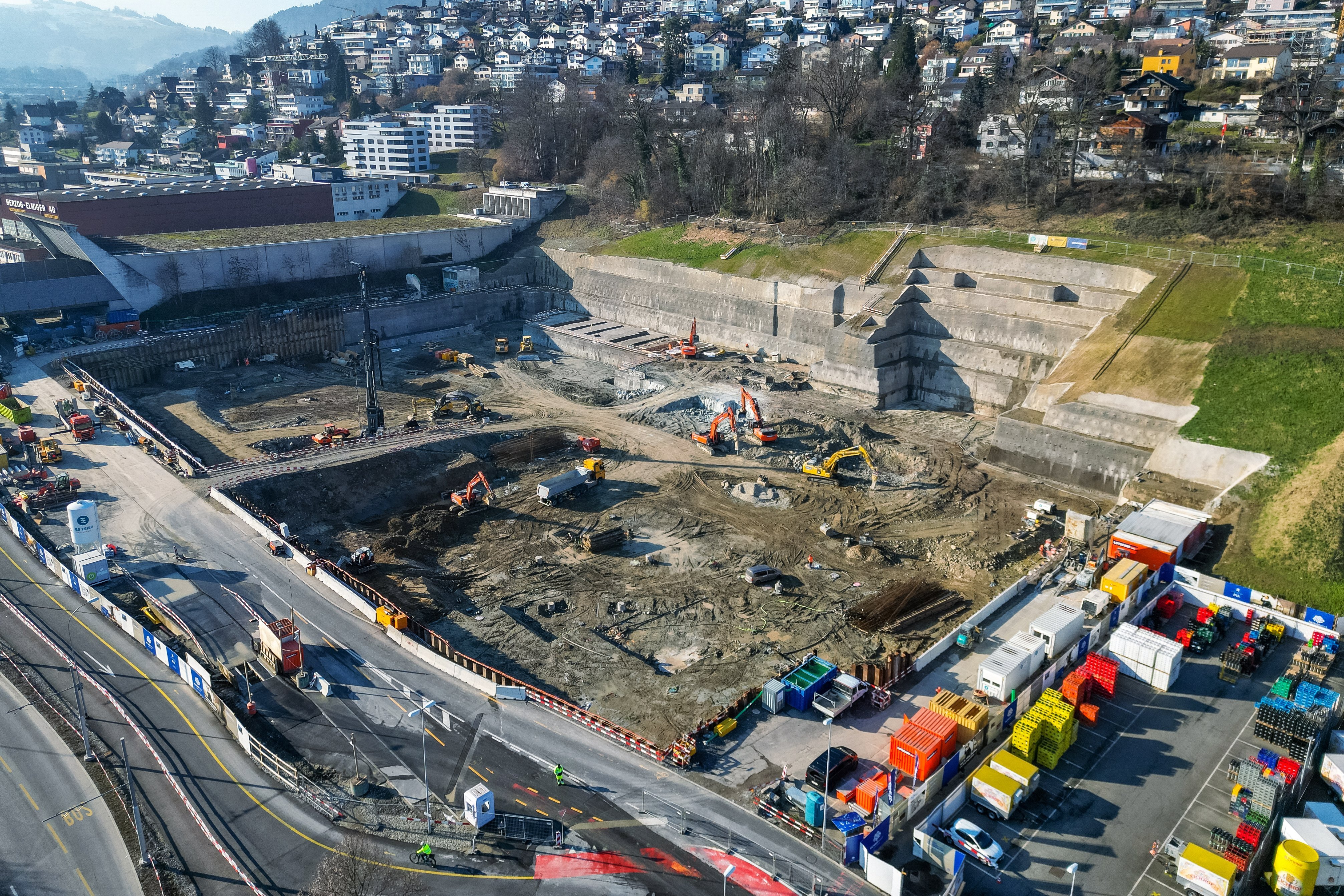Deep pit for the future of energy
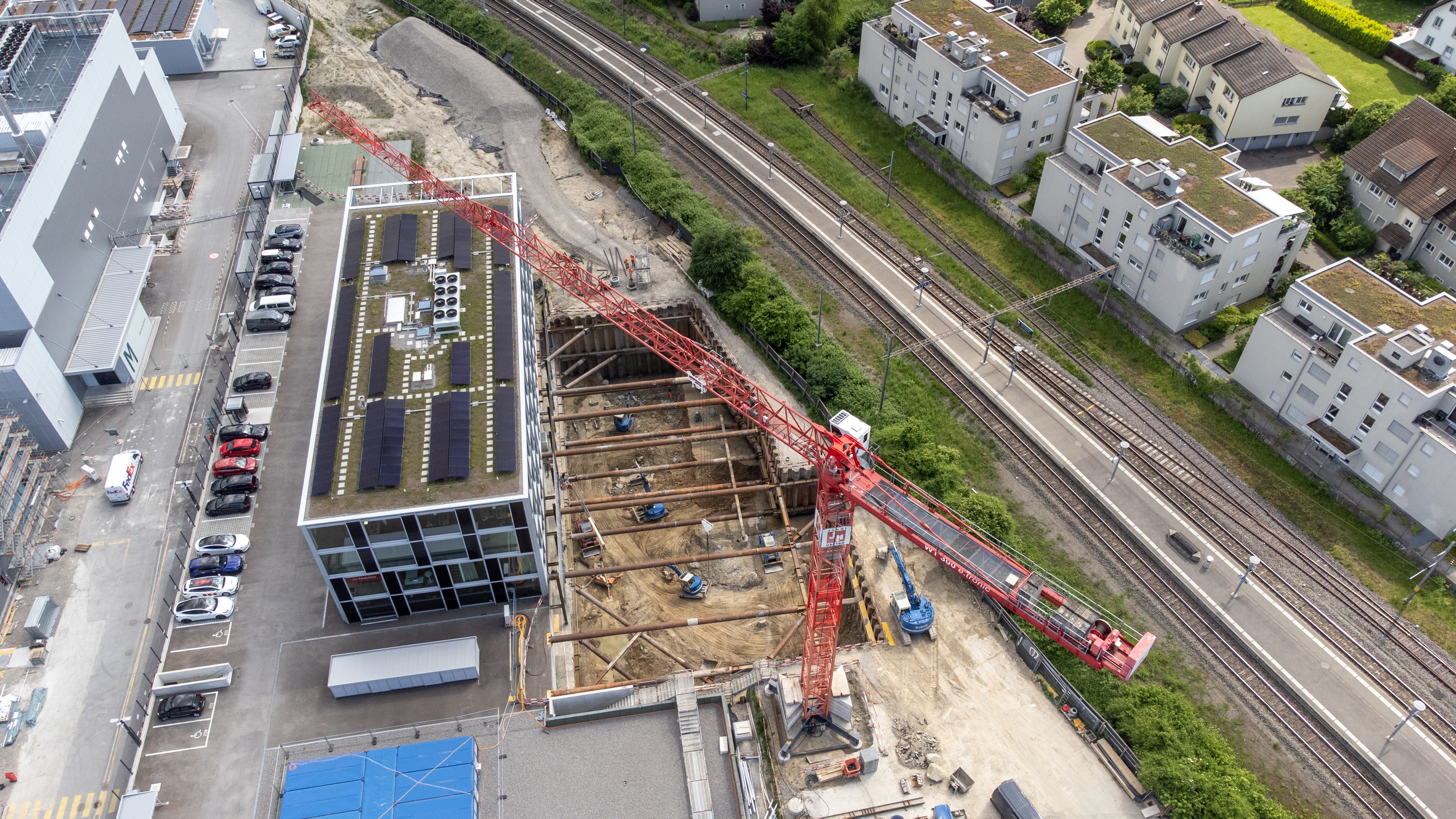
Basler & Hofmann is planning an energy center for Energie 360° in Dielsdorf (ZH), together with other planning partners. The centre will convert the waste heat from three data centers into heating energy. The centre is built on a deep excavation pit that meets highly complex requirements. We take a closer look at the pit to find out what engineering challenges need to be overcome for this forward-looking project.
The site is a hive of activity: two huge data centers are already in place, with construction workers preparing the foundations for the third data center next to them. Not far away, another excavation is opening up directly in front of an office building. This is where an energy center will be built to supply several thousand households in Dielsdorf and the neighboring communities with heating energy and hot water. The pit is deep - eleven meters deep. On this day in early summer 2025, several excavators are digging away the last layers of earth. They look like toys from above.

Crammed between two fronts
The excavation is massively secured: a wall of in-situ concrete bored piles supports it against the office building; on the opposite side, mighty steel sheet pile walls secure the ground. A net made of thick steel beams - the sheet piles - also spans across the pit to secure the excavations. There is no question that enormous compressive forces are kept under control here.
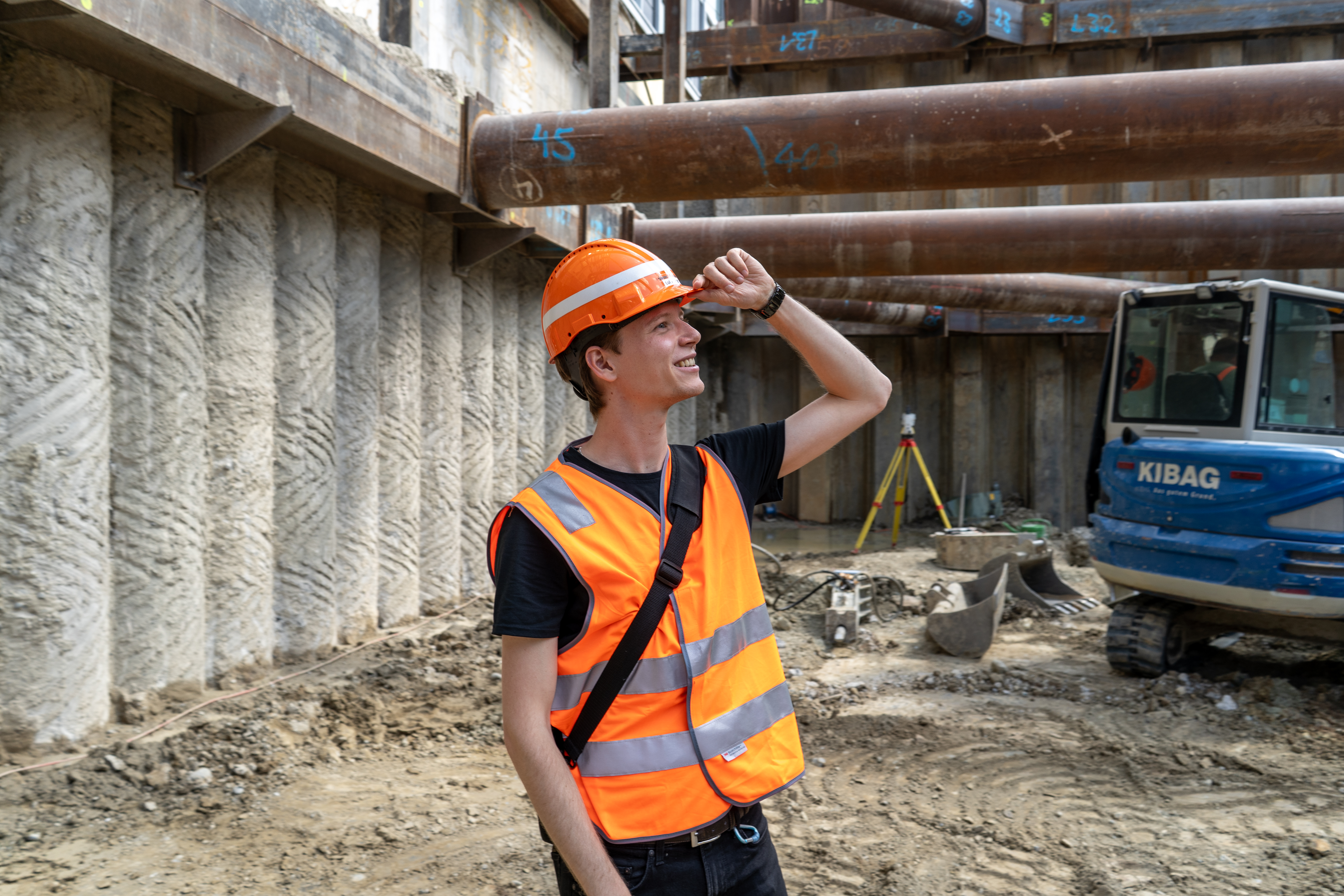
Lukas Vogt is a project engineer for geotechnics and special civil engineering at Basler & Hofmann. He is responsible for the excavations in Dielsdorf as technical site supervision. On one side of the pit is the Green office building, on the other is the SBB railroad line. Nothing is allowed to sink or move - which is why the strictest statics and Safety and Security requirements have to be met.
And that's not all. The groundwater also poses a challenge. The energy center will be built underground; it will stand in the groundwater. This means that the plant and the excavations must be absolutely watertight. To prevent the building from floating, it will be anchored in the ground with tension piles. And because the energy center is partly located in a flood zone, over which a drainage channel will run, a possible flood also had to be taken into account in the project planning.

Energy center uses waste heat from three data centers
Couldn't the energy center be built somewhere else? This question certainly arose. But a feasibility study showed that this is exactly the best possible location. The energy center will use the waste heat from the three data centers that are being built on the site. However, space on the site is limited.
The excavations are located on the site of IT company Green in the industrial area of Dielsdorf. Green is building three data centers here, i.e. large data centers. Demand for such data centers is growing rapidly in Switzerland - not least because of the widespread use of AI, political stability and the fact that our country knows how to deal with natural hazards. Thousands of high-performance computers work in the data centers and produce a lot of waste heat during operation.
Green therefore decided to pass on its waste heat to the energy company Energie 360°. Energie 360° in turn commissioned Basler & Hofmann and other companies with the planning of the energy center. Basler & Hofmann is also planning the service pipes on the site. The goal: from autumn 2026, the waste heat from the data centers will flow to households in Dielsdorf and the surrounding area in the form of district heating.

Two basement levels under the park
Initially, the energy center was not even part of the site planning. The original master plan only envisaged three data centers, three office buildings, an underground car park and a public park. The latter was requested by the municipality of Dielsdorf.
When it became clear that the waste heat could be used for a district heating network, there initially seemed to be no space for an energy plant. The solution then came in the form of a feasibility study by Basler & Hofmann: because there was not enough space above ground, the central plant was to be built underground beneath the park.
A basement was therefore planned for the energy center. However, a change was made during the course of the project: it was decided that the heating network in neighboring Regensdorf should also be supplied from the Dielsdorf energy center. As a result, the control center had to be built larger. The decision was made to build a second basement. The authorities agreed and granted building permission. A planning team consisting of Basler Hofmann and other contractors responsible for various trades and disciplines then set to work on the detailed design.

The structural works have begun
Back on the building site, it is now high summer. A lot has happened in the excavations. The ground slab at a depth of eleven meters has been concreted and the foundations have been laid. The first phase of structural engineering has begun. In the coming months, the two basement floors of the energy center will be built. The structural works should be completed by the end of the year. This will be followed by the extension, and the heat pumps and two gas boilers will be installed.
Project coordinator Federico Mazzolini is satisfied: "It's great what our team has achieved with the excavation support. We have created a complex, safe excavation that meets the high requirements of SBB and the site, while still allowing flexibility in the design of the interior of the headquarters."
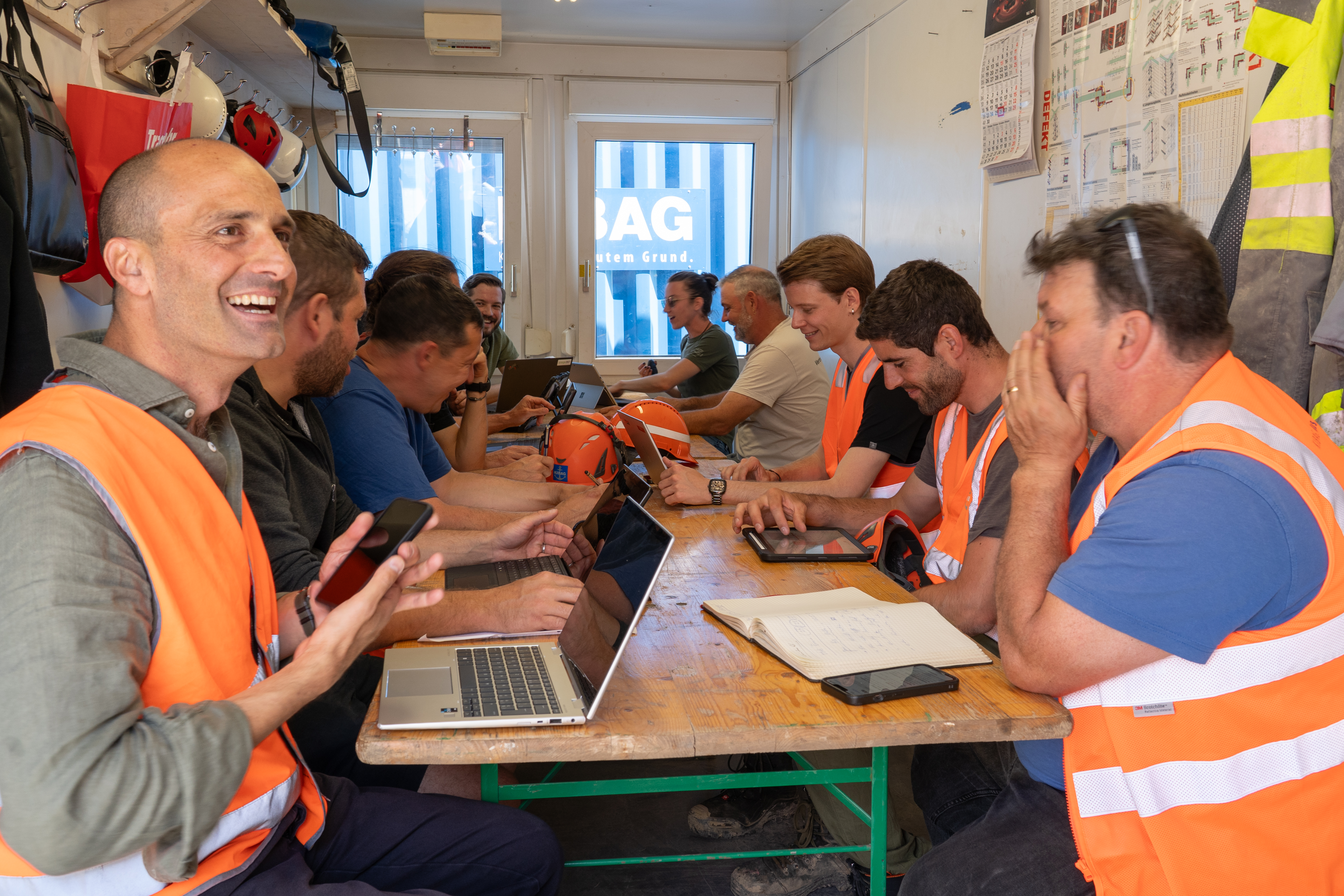
If everything goes according to plan, the energy center will go into operation in autumn 2026. It will raise the waste heat from the data centers to the required temperature before it flows into the pipe systems of the district heating network. The pipe network will transport the heating energy to the connected properties in the form of hot water. Hardly anything will be visible of the control center itself after completion. Only a small pavilion and an eleven meter high tower, which houses the storage tank and the chimney systems, will protrude from the ground in the park as above-ground entrances.
